The "Trophy Economy". The Development of the Stolen Ukrainian Black Sea Shelf / 2014-2021
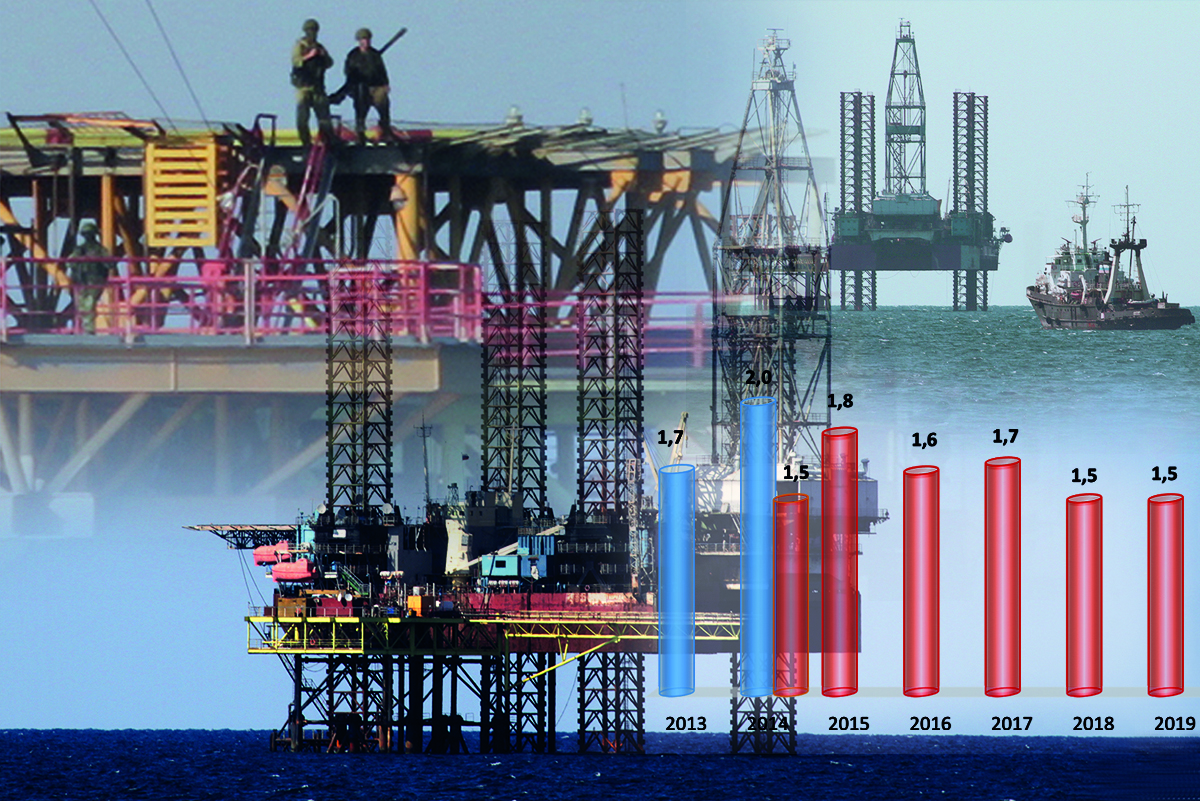
The Monitoring Group of BlackSeaNews
and the Black Sea Institute of Strategic Studies
presents an updated series of articles
«The Socio-Economic Situation in Occupied Crimea in 2014 – 2021»
Back in the USSR. The Reverse Restructuring of the Crimean Economy / 2014-2021
The "Trophy Economy". Militarization as a Factor of Industrial Growth / 2014-2021
The "Trophy Economy". The Development of the Stolen Ukrainian Black Sea Shelf / 2014-2021
The Crimean "Trophy Economy": The Sale of Ukrainian Property. An Updated Review for 2014 – 2021
The Occupied Crimean Tourism / 2014-2021
Occupied Crimea. Exports and Imports / 2014-2021
The Banking System of Crimea: What is Really Happening on the Occupied Peninsula (Updated)
Investment. What the "Crimean" Federal Target Programme Finances / 2014-2021
«Migration weapons»: the replacement of the Crimean population with Russian
Water in Occupied Crimea / 2014-2021
The Crimean Budget. Small Business. Salaries and Pensions / 2014-2021
* * *
During 2014-2020, in violation of the UN Convention on the Law of the Sea, Russia has illegally extracted hydrocarbons in the waters of the Azov and Black Seas near the occupied Crimea.
Gas production in Crimea is carried out by Chornomornaftohaz DAT, a subsidiary of Naftohaz Ukrainy NAK, which several years before the occupation of the peninsula purchased for its Crimean branch a modern fleet, including two advanced deep-water jackup rigs.
In 2013, Chornomornaftohaz produced about 1.651 billion cubic metres of gas, which provided 82% of the Crimean domestic gas consumption (about 2 billion cubic metres), with the remaining demand met via the pipelines from mainland Ukraine.
The Ukrainian company owned 17 fields, including 11 gas fields, 4 gas condensate fields, and 2 oil fields. The total reserves of all the fields amounted to 58.56 billion cubic metres of natural gas, 1231 thousand tonnes of gas condensate, and 2530 thousand tonnes of oil.
Chornomornaftohaz is developing 9 fields: 2 gas condensate ones (Holitsynske and Shtormove), 6 gas ones (Arkhanhelske, Dzhankoiske, Zadornenske, Skhidno-Kazantypske, Pivnichno-Bulhanakske and Odesa), and the Semenivske oil field.
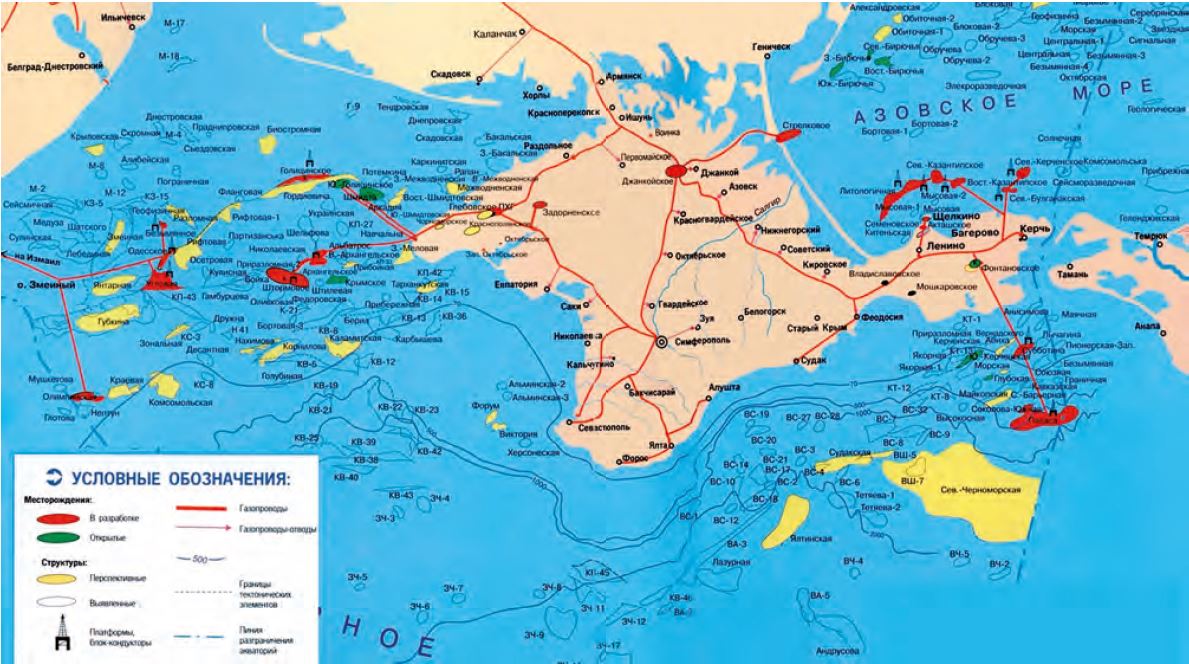
The major driving force for the development in the years before the occupation was the offshore Odesa gas field located off the coast of the Odesa region, 150 km west of Crimea and 130 km south of the city of Odesa.
On 13 March 2014, Chornomornaftohaz, including its jackup rigs at the Odesa field, was seized by the Russian special operations forces. The seizure of the Chornomornaftohaz rigs was carried out by the well-known in Russia “Pskov paratroopers” of the airborne troops, namely the 104th air assault regiment, part of the 76th Guards air assault division. The area of deployment is Pskov oblast of the Russian Federation, military unit 32515.
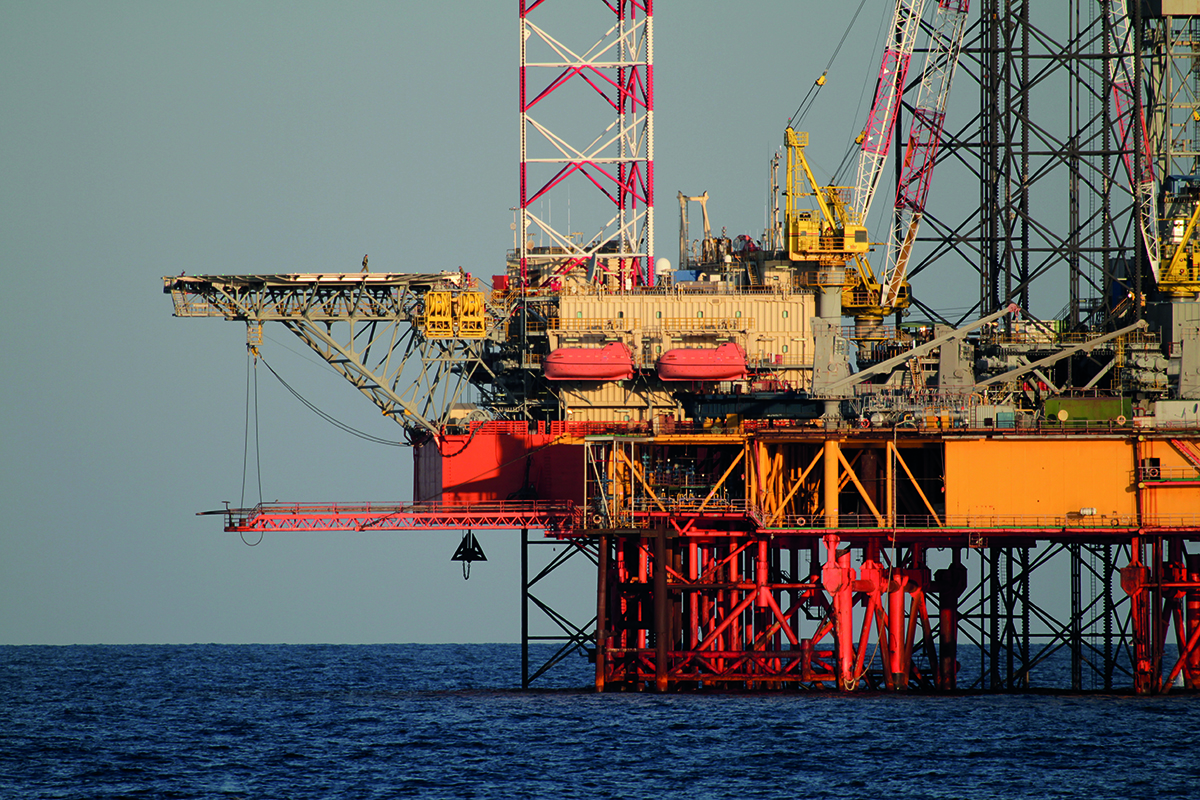
Starting 14 March 2014, Naftohaz Ukrainy NAK has not been receiving from the DAT Chornomornaftohaz PAT the daily operational information on the production, transportation, and use of natural gas, oil, and gas condensate.
A few days later, on 17 March 2014, Chornomornaftohaz was expropriated by the Crimean collaborators. Its offshore facilities continued to work under the round-the-clock guard by the Russian special operations forces and naval ships of the RF’s Black Sea Fleet.
Minesweepers, small anti-submarine ships, and missile boats controlling the surface picture, underwater and air situation have been guarding the gas fields.
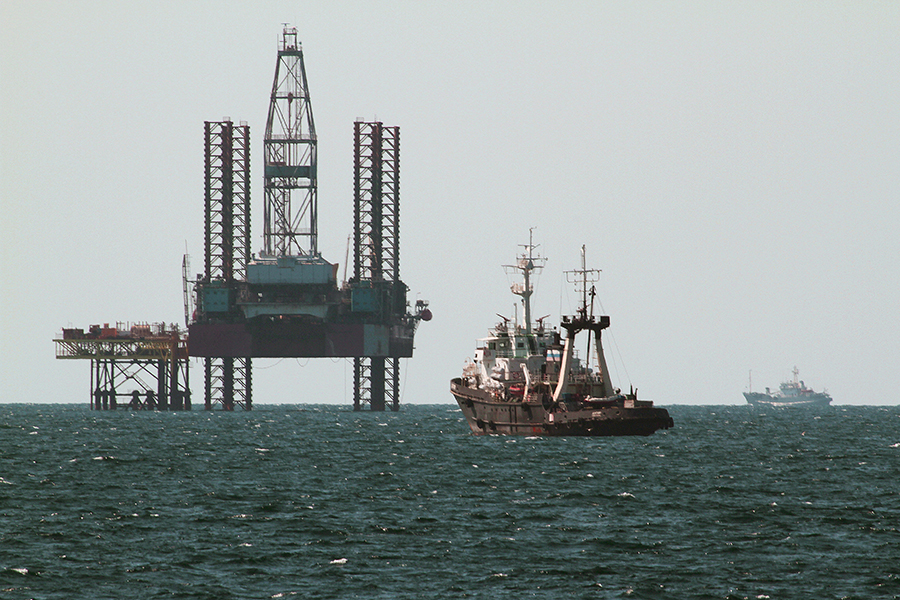
After the seizure and expropriation of Chornomornaftohaz in the spring of 2014, Naftohaz Ukrainy disconnected Crimea from the mainland gas transportation system (GTS). That happened after Naftohaz Ukrainy had stopped receiving from Chornomornaftohaz automatic information on the parameters of the gas distribution stations operation.
Ukraine’s decision to disconnect occupied Crimea from its GTS had led to the gas shortage that Russia decided to make up for by increasing the volume of production in the Odesa field. In 2014, the production grew to nearly 2 billion cubic metres and, for the first time, Crimea managed to do without the supply from the mainland.
However, as early as the winter of 2014/15, the disconnected system encountered a new problem – the seasonality of consumption: 4 million cubic metres a day in summer and more than 12 million cubic metres a day in winter. In other words, they had a surplus of gas in summer and a shortage in winter.
Given that the peninsula’s Hlibovske underground gas storage facility (UGSF) has an active volume of up to 1 billion cubic metres or about 60% of the annual consumption, the Chornomornaftohaz had a surplus of gas. Having filled the UGSF to the highest level in its history, the company was forced to restrain production. In 2015, it declined to 1.844 billion cubic metres. 57% of that volume, that is, about 1 billion cubic metres was produced at the Odesa field.
It should be pointed out that even though the Odesa field is located outside the territorial waters of Ukraine, it is still in its exclusive economic zone that is not adjacent to the occupied Crimean Peninsula.
The forecasts about declining gas production came true: in 2016, Chornomornaftohaz produced 1.676 billion cubic metres of gas, which was slightly more than in the last pre-war year of 2013. Afterwards, the output from offshore gas fields continued to decline sharply. Over the 9 months of 2021, the gas output was almost equal to that of 2012, i.e. before the Odesa field was put into production. This happened due to international sanctions, which prohibit the export of equipment for offshore gas production to Russia. In other words, modern offshore drilling equipment purchased by Ukraine in 2012 cannot be maintained properly.
In 2021, due to international sanctions banning the export of equipment for offshore gas production to Russia, the gas output has decreased to the level of 2012.
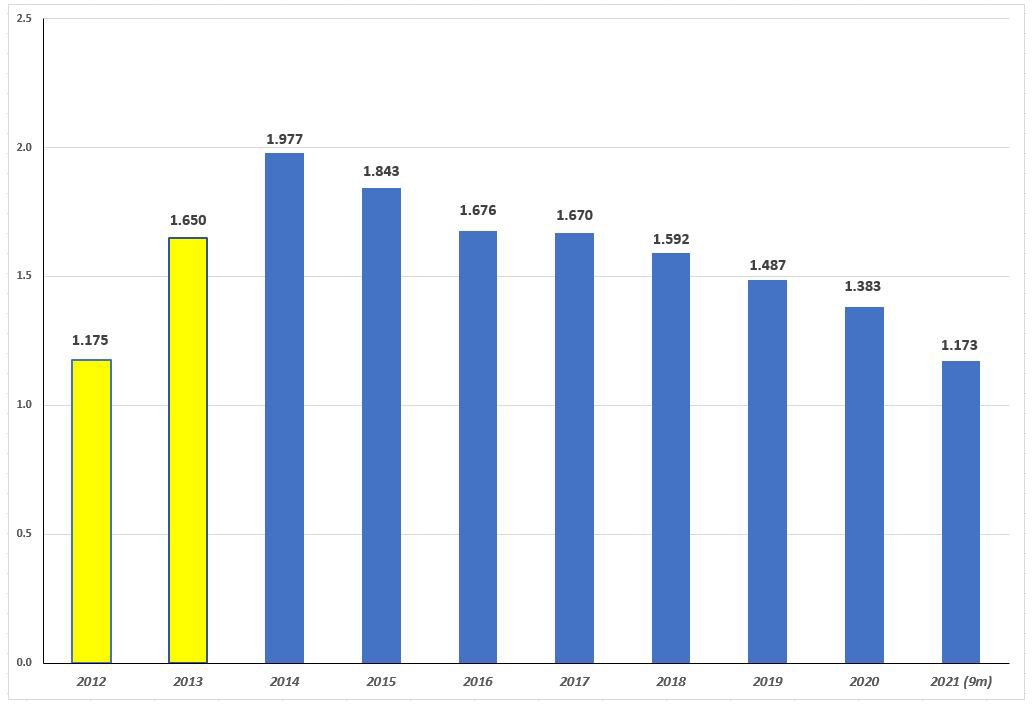
Due to the accelerated militarization of the occupied Crimean Peninsula (see "The "Trophy Economy." Militarization as a Factor of Industrial Growth. 2014-2021") and against the backdrop of declining offshore gas production, Crimea and Sevastopol have faced an increasing deficit of own energy capacity, primarily electricity. In Crimea, natural gas is used as raw material for power plants, including the new ones built in 2019.
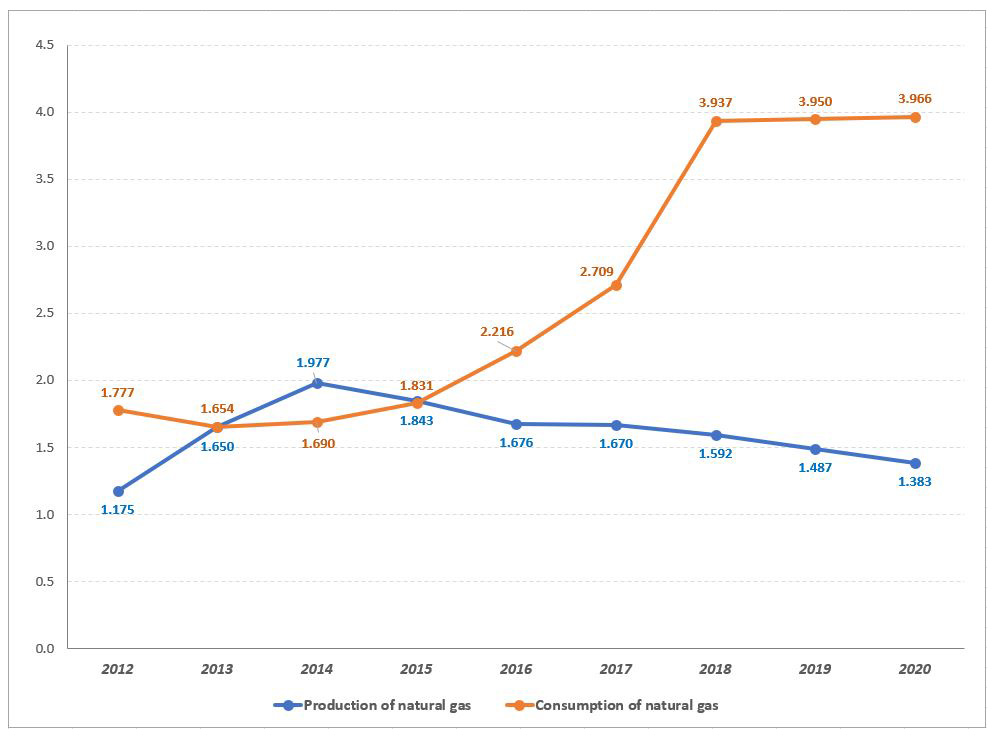
Because of that, the occupying power had to sharply accelerate the construction of the gas pipeline from Krasnodar Krai, originally scheduled for completion only in mid-2018.
The pipeline started operation on 27 December 2016. The total length of the land part of the Krasnodar Krai – Crimea main gas pipeline with the diameter of 720 millimetres is 341 km, of which 16 km is laid underwater, across the Kerch Strait. The gas pipeline is able to pump 2.1 billion cubic metres of gas per year, and with an increase in pressure – up to 4 billion cubic metres per year.
The pipeline has been built by Stroygazmontazh, a company under the international sanctions. The final cost is not disclosed, however, according to the authors’ sources, due to the force majeure situation, its value has significantly exceeded the estimated 20 billion roubles. The construction of the underwater part accounted for up to 70% of the total cost.
For fear of sanctions, it is not Gazprom that supplies the natural gas to occupied Crimea via the pipeline, but the federal state unitary enterprise (FSUE) Foreign Economic Association Promsyreimport. The gas is purchased at the St. Petersburg International Mercantile Exchange.
* * *
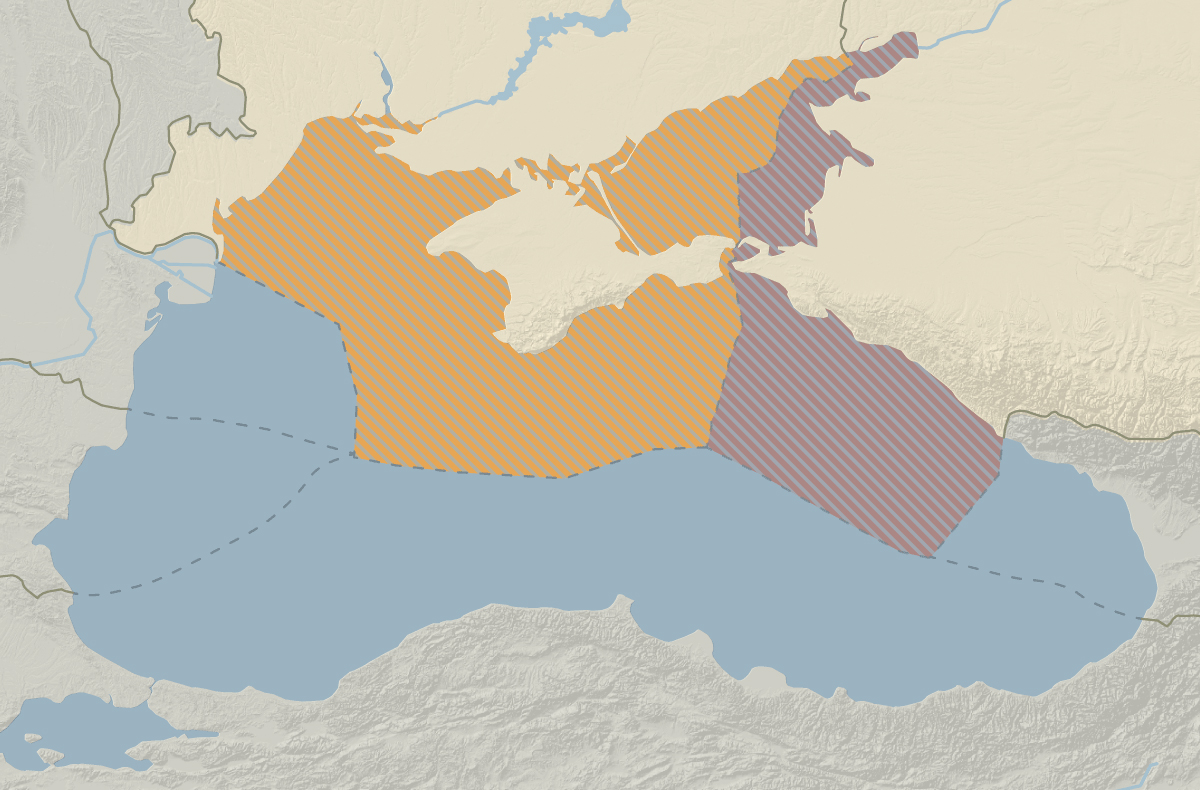
Meanwhile, in 2017, Ukraine made significant progress on these issues in international courts. There are two proceedings currently underway.
The first proceedings were brought by the Ministry of Foreign Affairs of Ukraine at the Permanent Court of Arbitration in The Hague, the Netherlands, under the 1982 UN Convention on the Law of the Sea.
Notice of arbitration, lawsuit and its base was sent to Russia on September 14, 2016.The Arbitration Tribunal was formed on 22 December 2016.
On 12 May 2017, the first court hearings took place, resulting in the order as to the procedural deadlines.
On 19 February 2018, Ukraine submitted a memorandum containing a description of Ukraine’s claims against Russia.
The Ministry of Foreign Affairs memorandum states that Russia has violated the sovereign rights of Ukraine in the Black Sea and the Sea of Azov, as well as in the Kerch Strait. Since 2014, the RF has deprived Ukraine of its right to exercise its powers as a maritime nation, has been exploiting Ukraine’s sovereign resources for its own needs and usurped the right of Ukraine to regulate its own marine areas.
It is also noted that Russia has been stealing the energy and fish resources belonging to Ukraine and its people, while also causing physical damage to Ukrainian fishermen, and has been blocking the entry of ships into Ukrainian ports due to the illegal construction of the Kerch Bridge.
On 21 February 2020, the Tribunal concluded that it had no jurisdiction over some of the claims concerning the rights of Ukraine as a coastal state in the waters near Crimea, as it had no jurisdiction to decide the issue of sovereignty over the peninsula. That is, it will not consider the issues of Ukraine's rights in the Black Sea and will only consider those related to the Sea of Azov and the Kerch Strait.
The second proceedings were instituted by Naftohaz Ukrainy NAK together with the six other companies of the group, Chornomornaftohaz, Ukrtranshaz, Ukrhazvydobuvannia, Ukrtransnafta, Haz Ukrainy, Likvo.
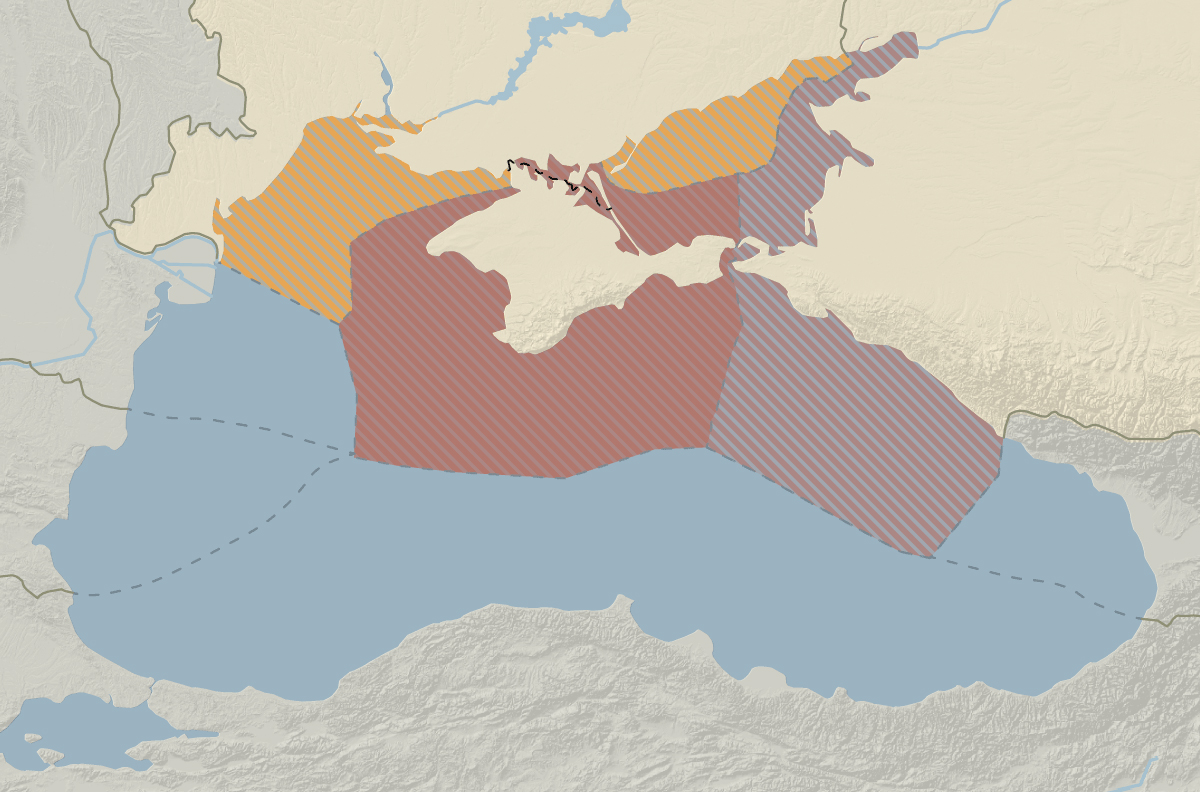
The lawsuit was filed in October 2016.
In August 2017, the Permanent Court of Arbitration in The Hague began consideration of Naftohaz's arbitration claim against the Russian Federation for compensation of $ 5 billion in damages from the loss of assets as a result of the annexation of the Crimean Peninsula in 2014.
An oral hearing on the issues of jurisdiction and responsibility was held at the Peace Palace in The Hague in May 2018.
In March 2019, the Tribunal recognized its jurisdiction over Naftohaz's arbitration claim against Russia regarding the lost assets.
The director of Chornomornaftohaz, a state-owned joint-stock company, which has resumed its operations in mainland Ukraine, Svitlana Nezhnova, said that the final amount of the company's losses caused by the loss of assets in Crimea annexed by Russia would be known in February 2022. It is expected to increase to $ 8 billion.
* * *
According to the authors,
since the beginning of the occupation, the Russian occupiers have produced more than 12 billion cubic metres of gas on the occupied peninsula and in the offshore fields in the Black Sea and the Sea of Azov.
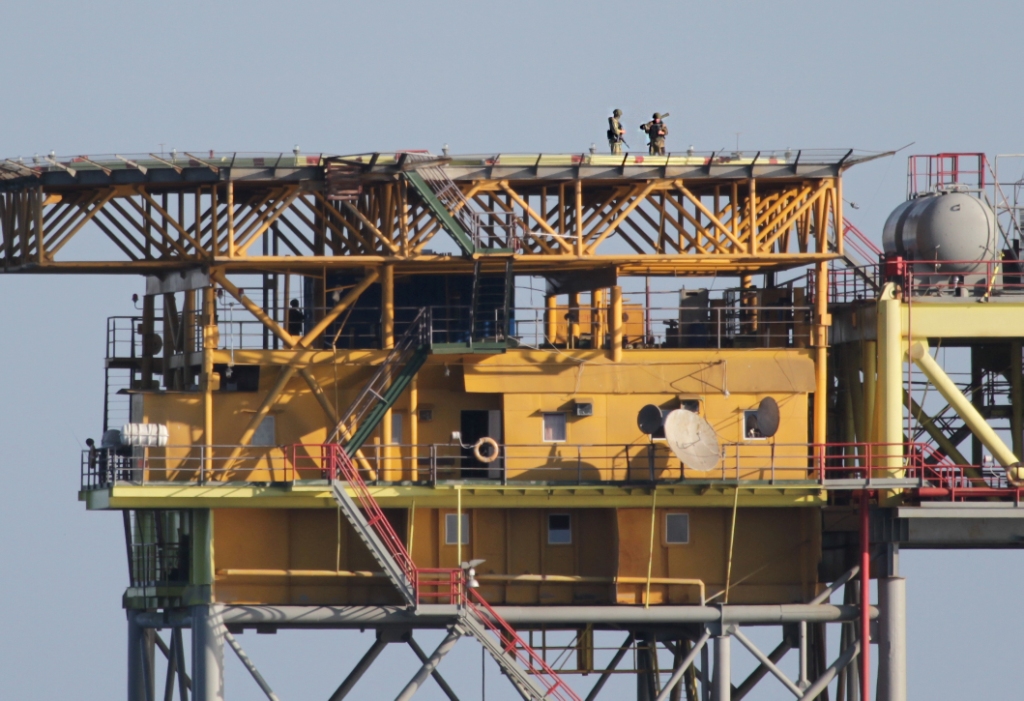
However, the plans to develop new fields have already been forgotten, although in November of 2016 the occupying “Ministry of Fuel and Energy" of Crimea reported that in 2017 "Chornomornaftogaz" was going to intensify exploration activities on the Black Sea shelf.
Yet, this can also be attributed to technological reasons - the lack of deep-sea equipment at Chornomornaftogaz due to sanctions.
The only thing that can be considered a notable "success" in the Russian development of the Ukrainian shelf is the creation of mini-military bases on the oil platforms. The Russian military has installed radar stations on the seized Ukrainian rigs and platforms. These facilities are constantly guarded by about 130 armed servicemen.
* * *
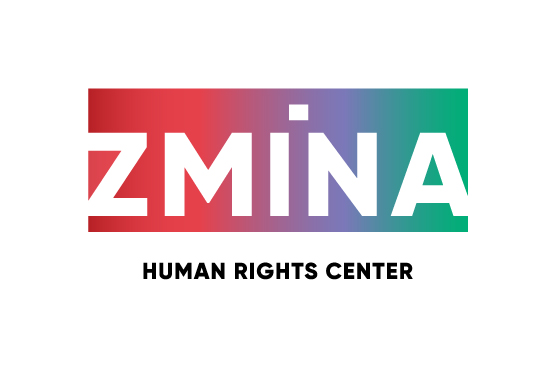
This article has been published with the support of ZMINA
Human Rights Centre.
The content of the article is the sole responsibility of the authors.
More on the topic
- 21.08.2023 Peculiarities of the 2023 Crimean Holiday Season — a «Tourism» in Camouflage
- 06.08.2023 Crimea During the Great War. Part 2. Extreme Tourism or «New Types of Tourism» and Tourist Numbers (2)
- 21.07.2023 Crimean Titan: Under a Russian Holding or a Ukrainian Tank?
- 12.06.2023 Crimea during the Great War. The situation in the occupied Crimea in 2022-2023. Military Context (1)
- 23.11.2021 Occupied Crimea. Exports and Imports / 2014-2021
- 23.11.2021 Water in Occupied Crimea / 2014-2021
- 23.11.2021 The Crimean Budget. Small Business. Salaries and Pensions / 2014-2021
- 23.11.2021 The "Trophy Economy". The Commercial Exploitation of Marine Biological Resources in the Black Sea and the Sea of Azov / 2014–2021
- 21.11.2021 The "Trophy Economy". Militarization as a Factor of Industrial Growth / 2014-2021
- 21.11.2021 Back in the USSR. The Reverse Restructuring of the Crimean Economy / 2014-2021
- 20.11.2021 The Occupied Crimean Tourism / 2014-2021
- 20.11.2021 Investment. What the "Crimean" Federal Target Programme Finances / 2014-2021